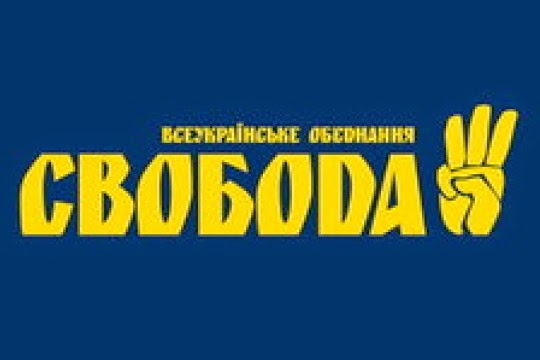In 1991, fifteen countries emerged from the ruins of the Soviet Union. Of those in Europe, most have at least tried to move towards the European Union. An important exception exists, however-the Republic of Belarus.
The Republic of Belarus is sometimes called "Europe's Last Dictatorship" by those in the West. Since 1994, Belarus has been under the control of President Alyaksandr Lukashenka, who continues many Soviet-era policies. Belarus's economy is still centrally planned, and the country has been closely allied with Russia since independence. President Lukashenka and Russian President Vladimir Putin have enjoyed a friendly relationship for most of their respective stays in power. Even Belarus's official national symbols are extremely similar to that of the old Belarusian Soviet Socialist Republic. The flag has barely changed and the present national anthem uses the tune that was used when Belarus was a republic of the USSR with modified lyrics. Though Belarus has two official languages, Russian is used much more frequently than Belarusian.
Up until recently, Belarus has been relatively effectively playing both sides of the Ukraine conflict. Lukashenka's government has said in the past that they support a "United Ukraine"and has offered support to Kiev, while staying mostly friendly with Moscow. The Belarusian capital, Minsk, has been the site of peace talks despite a lack of closure to the conflict so far. Relations have become strained, though, between Minsk and Moscow, and whether Belarus can continue its current economic setup has been called into question. Belarusians, though not all that supportive of the Euromaidan movement in Ukraine, have been slowly distancing themselves from the Kremlin and this new independence has been endorsed by the Lukashenka government.
The quicker the conflict in Ukraine is resolved, the better for Belarus's stability. If the Kremlin digs in against Kiev, the EU, and US, it'll get more and more difficult for the Belarusian economy to keep its stability.
An opposition to Lukashenka exists, and they may find a place in the spotlight in the new year, because Lukashenka is up for re-election in 2015. The presidential election in December 2010, which Lukashenka claims he won handily, saw protests in Minsk, though it wasn't long until Lukashenka's government decided to outlaw demonstrations in response.
During a Euro 2016 qualifier football match between Ukraine and Belarus in Minsk, nearly 100 fans were arrested when the whole stadium broke into a vulgar anti-Putin song.
At that same match, Belarusian fans chanted Ukrainian patriotic slogans like "Слава Україні, Героям слава!" ("Glory to Ukraine! And to her heroes, glory!") The Ukrainian fans responded by chanting "Жыве Беларусь!" (Long live Belarus!) Euromaidan demonstrations across Ukraine often saw the white-red-white banner of Belarusian opposition alongside Ukraine's blue and gold banner.
The Republic of Belarus is sometimes called "Europe's Last Dictatorship" by those in the West. Since 1994, Belarus has been under the control of President Alyaksandr Lukashenka, who continues many Soviet-era policies. Belarus's economy is still centrally planned, and the country has been closely allied with Russia since independence. President Lukashenka and Russian President Vladimir Putin have enjoyed a friendly relationship for most of their respective stays in power. Even Belarus's official national symbols are extremely similar to that of the old Belarusian Soviet Socialist Republic. The flag has barely changed and the present national anthem uses the tune that was used when Belarus was a republic of the USSR with modified lyrics. Though Belarus has two official languages, Russian is used much more frequently than Belarusian.
Left: Flag of the Belarusian Soviet Socialist Republic
Right: Flag of the Republic of Belarus
Right: Flag of the Republic of Belarus
As 2014 winds down, Belarus finds itself in a rut. The crisis in Ukraine has left Belarus to tread a tightrope between Russia and Ukraine and in a considerable economic quandary. The Belarusian economy, a quasi-socialist, collectivist setup, is heavily dependent on Russia, and sanctions have stung Belarus as well as Russia. The Belarusian rouble, already one of the least valuable currencies in the world, is depreciating along with its Russian counterpart and the Ukrainian hryvnia. 1 American dollar will buy you nearly 11,000 Belarusian roubles as of 28 December 2014, compared to less than 3000 in 2010. Inflation is through the roof.
Belarus has similar political divisions to Ukraine, but these divisions are not as pronounced in the former. Like in Ukraine, there are pro-Western and pro-Russian sects, but the pro-Russian camp is much stronger as it has the government's backing. Those who are opposed to President Lukashenka generally support closer ties to Europe, economic reform, and greater personal and press freedom. Those who are supportive of Lukashenka cite the general stability of his regime, the lack of oligarchic corruption as seen in Russia and Ukraine, and the lack of economic chaos that plagued Russia and Ukraine after the fall of communism. President Lukashenka recently reshuffled his cabinet and replaced Prime Minister in an attempt to stabilize his country's faltering economy, but whether that will jolt the economy back to life is still yet to be seen.
Up until recently, Belarus has been relatively effectively playing both sides of the Ukraine conflict. Lukashenka's government has said in the past that they support a "United Ukraine"and has offered support to Kiev, while staying mostly friendly with Moscow. The Belarusian capital, Minsk, has been the site of peace talks despite a lack of closure to the conflict so far. Relations have become strained, though, between Minsk and Moscow, and whether Belarus can continue its current economic setup has been called into question. Belarusians, though not all that supportive of the Euromaidan movement in Ukraine, have been slowly distancing themselves from the Kremlin and this new independence has been endorsed by the Lukashenka government.
The quicker the conflict in Ukraine is resolved, the better for Belarus's stability. If the Kremlin digs in against Kiev, the EU, and US, it'll get more and more difficult for the Belarusian economy to keep its stability.
An opposition to Lukashenka exists, and they may find a place in the spotlight in the new year, because Lukashenka is up for re-election in 2015. The presidential election in December 2010, which Lukashenka claims he won handily, saw protests in Minsk, though it wasn't long until Lukashenka's government decided to outlaw demonstrations in response.
During a Euro 2016 qualifier football match between Ukraine and Belarus in Minsk, nearly 100 fans were arrested when the whole stadium broke into a vulgar anti-Putin song.
At that same match, Belarusian fans chanted Ukrainian patriotic slogans like "Слава Україні, Героям слава!" ("Glory to Ukraine! And to her heroes, glory!") The Ukrainian fans responded by chanting "Жыве Беларусь!" (Long live Belarus!) Euromaidan demonstrations across Ukraine often saw the white-red-white banner of Belarusian opposition alongside Ukraine's blue and gold banner.
Photo credit to Wikipedia.
However, uprising in Belarus may be more difficult than it was in Ukraine or Yugoslavia. Belarus is a stable and functioning country, and Lukashenka's regime, while authoritarian, has been much more stable than that of what Russia endured in the 1990s and Ukraine has endured for most of its time as an independent state. Lukashenka's approval rating, while not nearly as strong as Putin's, saw modest increases during the conflict in Ukraine, as Belarusians trust his legacy of stability over the turbulence Ukraine has endured. A majority of Belarusians consume Russian media through television and believe many narratives that it's pushed-namely, that the new Ukrainian government is fascist. Pro-European media, abundant in Ukraine even before Euromaidan, is extremely limited in Belarus.
Ukraine's conflict has aroused stronger feelings of independence from Russia in Minsk. President Lukashenka gave his Victory Day address in Belarusian for the first time, whereas in the past he always used Russian. If the conflict in Ukraine is resolved quickly, the status quo is likely to keep its hold on power.
Lukashenka's grip on power will remain strong unless two things happen. If the economy continues to hurt from Russian economic woes, popular discontent could hurt the government's support. Belarusian opposition is fractured, but this is not necessarily an insurmountable obstacle. In Yugoslavia, strictly nonpartisan Serbian opposition groups like Otpor! (Resistance!) united political opposition to President Slobodan Milosevic and supported a coaltion of parties behind Vojislav Kostunica. Belarus does not have Yugoslavia's political party structure, but if Belarusian opposition is to influence ordinary Belarusians, it needs broad support like Kostunica had in Serbia.
Belarus is not a particularly rich nation, but it is considerably richer than Ukraine, and has a much smaller population (9 million Belarusians vs. 44 million Ukrainians). This would, in theory, make a transition to closer relations with the European Union easier than in Ukraine, but Belarusians would likely be wary of serious economic overhaul as they've seen the chaos that's plagued both Ukraine and Russia first-hand.
The regime currently in power in Belarus is repressive and authoritarian, but until a credible opposition that is able to smoothly transition between Belarus's planned economy to a modern, capitalist economic scenario, it will likely stay in power. A smooth transition is not impossible (Poland, the Czech Republic, and Estonia are examples of successful transitions) but it will not be easy.
Ukraine's conflict has aroused stronger feelings of independence from Russia in Minsk. President Lukashenka gave his Victory Day address in Belarusian for the first time, whereas in the past he always used Russian. If the conflict in Ukraine is resolved quickly, the status quo is likely to keep its hold on power.
Lukashenka's grip on power will remain strong unless two things happen. If the economy continues to hurt from Russian economic woes, popular discontent could hurt the government's support. Belarusian opposition is fractured, but this is not necessarily an insurmountable obstacle. In Yugoslavia, strictly nonpartisan Serbian opposition groups like Otpor! (Resistance!) united political opposition to President Slobodan Milosevic and supported a coaltion of parties behind Vojislav Kostunica. Belarus does not have Yugoslavia's political party structure, but if Belarusian opposition is to influence ordinary Belarusians, it needs broad support like Kostunica had in Serbia.
Belarus is not a particularly rich nation, but it is considerably richer than Ukraine, and has a much smaller population (9 million Belarusians vs. 44 million Ukrainians). This would, in theory, make a transition to closer relations with the European Union easier than in Ukraine, but Belarusians would likely be wary of serious economic overhaul as they've seen the chaos that's plagued both Ukraine and Russia first-hand.
The regime currently in power in Belarus is repressive and authoritarian, but until a credible opposition that is able to smoothly transition between Belarus's planned economy to a modern, capitalist economic scenario, it will likely stay in power. A smooth transition is not impossible (Poland, the Czech Republic, and Estonia are examples of successful transitions) but it will not be easy.










.jpg)







